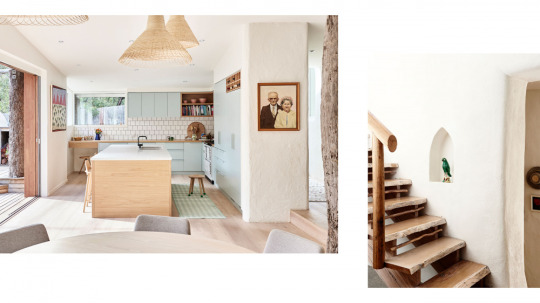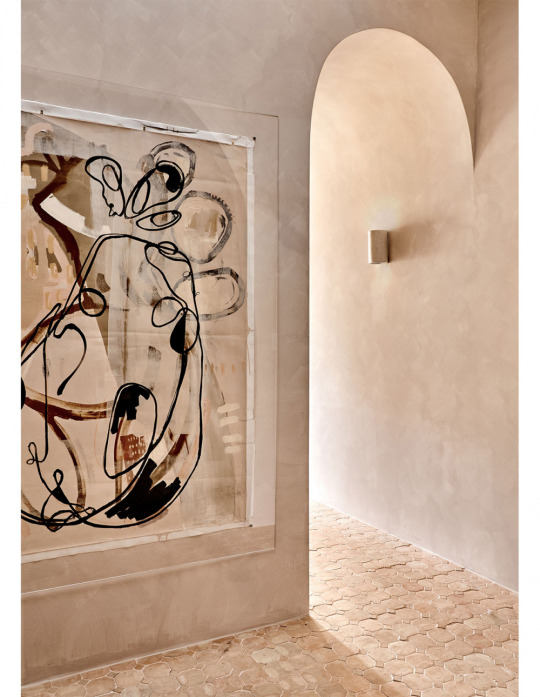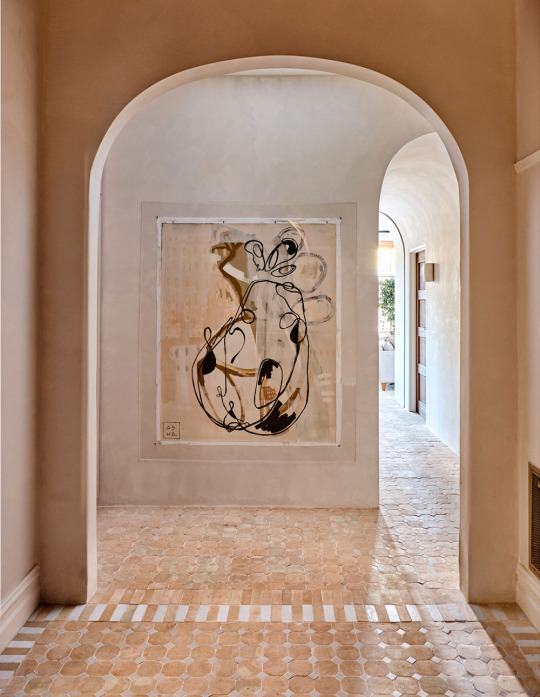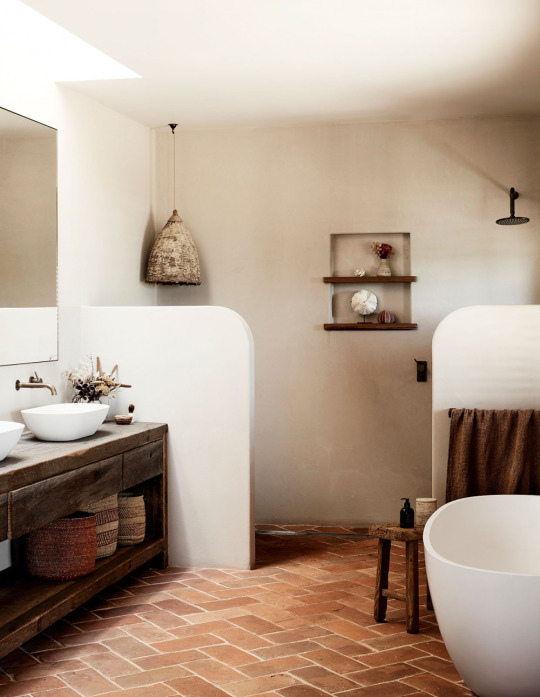#translucent stone in Melbourne & Sydney
Text
#Translucent Stone Veneers#Light Wall Products#led light wall in Melbourne#Natural Stone Walling#translucent stone in Melbourne & Sydney#Natural Super Thin Stone Veneers#Natural Stone Veneer#Stone Veneer Cladding#Best Quality Stone Wall Cladding in Melbourne#Natural Stone Cladding And Walling#Wall Cladding in Melbourne
0 notes
Text
So What’s The Deal With Textured Walls?
So What’s The Deal With Textured Walls?
Interiors
Lauren Li

The home of Emma Lane, featuring a custom cement and sand render, with pigment added for an environmentally friendly, truly unique finish! Photography – Caitlin Mills for The Design Files. Styling – Annie Portelli
To say that the world has been rocked this year is an understatement. The global pandemic has shifted our priorities inwards to the home, and given a sharp focus on what really matters. We’re all looking at our homes in a totally new light.
The current mood has us cocooning at home, where we want to celebrate the simple things. More than ever, our home is our sanctuary, and we need to feel connected, so we crave earthy, natural elements. We’re looking for honesty in design. The wabi-sabi ideas of finding beauty in imperfection and impermanence are really resonating right now, and our homes can reflect this feeling. Whilst these ideas have been showing in interiors for the past few years (you can read about Japanese design here), it seems that the current climate is accelerating the trend for a handcrafted, layered and textural home.

The award winning ‘Budge Over Dover’ project by YSG Studio in Sydney features extensive use of Venetian Plaster, on both walls and ceilings. Photo – Prue Ruscoe.

YSG Studio’s ‘Budge Over Dover’ project features pigmented Venetian Plaster on both walls and ceilings. Photo – Prue Ruscoe.

The home of Barb Hyman in Melbourne features textured limewashed walls, for an old-world feel. Photography – Caitlin Mills for The Design Files. Styling – Annie Portelli

The home of Arabella and Chris Wilson features mud-rendered, painted internal walls. Photography – Eve Wilson for The Design Files.

Home of Georgia Ezra (Tiles of Ezra). Photo – Amelia Stanwix.

A lime wash paint was used to achieve this soft, velvety texture in the Balnarring home of Kate Dinon. Photo – Rhiannon Taylor. Styling – Chelsea Hing.

The incredible home of Emma Lane. featuring a custom cement and sand render, with pigment added for an environmentally friendly, truly unique finish! Photography – Caitlin Mills for The Design Files. Styling – Annie Portelli

Rendered, textural walls in the Sydney home of William and Julia Dangar. Photography – Caitlin Mills for The Design Files. Styling – Annie Portelli
WALLS
We’re definitely seeing a huge trend towards textured wall finishes right now. These wall treatments exude a natural, earthy warmth that celebrate imperfection, and pair beautifully with other textural materials, such as raw timber and slubby linen. For this look, we want the walls to have a warmth about them, looking a little more like the baked earth of the Mediterranean, rather than the cold concrete of an industrial warehouse.
There are many ways to achieve a textural look on internal walls, from bagged brick, to cement render… but the trends were seeing most prominently right now all involve one key component – lime, aka crushed limestone.
Limewash
Limewash is essentially a painted surface that incorporates tiny particles of crushed limestone, creating surfaces that are mottled and matte, with a chalky texture –something like suede. Available in a wide array of different colours, limewash lends luminosity to flat walls, and brings real depth to a space.
Look to the warmer colours in a lime wash paint or suede effect that lean to brown or yellow, like beige, cream and cashmere. Steer clear of textured walls in bright colours such as turquoise and purple that were applied using sponges in the 90s or the bright orange ‘Tuscan’ look. This time around it’s about a more natural, earthy look.
Venetian Plaster
When pigment is added to aged slaked lime plaster, the finish is known as Venetian plaster. The application in thin translucent layers creates a uniquely textured, soft yet polished finish, giving the appearance of depth and movement due to the marble dust combined with lime. Seen internationally in projects by designers-to-the-stars Axel Vervoordt and Vincent Van Duysen, we’re seeing a lot of this polished plaster finish in Australian interiors right now – and there’s no better example than in the award-winning ‘Budge Over Dover’ project by YSG Studio in Sydney, which features pigmented Venetian Plaster in a range of incredible colours, on both walls and ceilings!
Tadelakt
Tadelakt has a similar soft, textural appearance to a limewash effect, but is perfect for wet areas. It’s a waterproof lime plaster surface used in Moroccan architecture. As it’s applied to the surface with a trowel, it gives a beautiful seamless appearance. Unlike tiles in the bathroom, there are no grout lines and it applies to curves effortlessly. When applied by a professional installer it can be used on all surfaces in a bathroom; walls, floor; vanity bench, and even the vanity basin.

Left: collections of handcrafted and vintage ceramics in the home of Emma Lane. Right: Travertine bedside table in the home of Alex Bennet. Photography – Caitlin Mills for The Design Files. Styling – Annie Portelli.

Bedrock display case for Future Collective. Photo – Pip Newell.

Den Holm Australian limestone sculpture in the home of Melissa Marshall. Photography – Caitlin Mills for The Design Files. Styling – Annie Portelli

American oak and travertine coffee table designed by David Harrison of Design Daily and made by Cranbrook Workshop. Photo – Caitlin Mills for The Design Files. Styling – Annie Portelli.

A rendered chest of drawers adds texture in the home of Tamsin Johnson. Photography – Caitlin Mills for The Design Files. Styling – Annie Portelli

Limestone sculptures by Lucas Wearne of Neighbourhood Studio. Photo – Amelia Stanwix for The Design Files.

A travertine table in the home of Alex Bennet. Photography – Caitlin Mills for The Design Files. Styling – Annie Portelli.
FURNITURE, ART + OBJECTS
Creating a textural interior isn’t just limited to walls – furniture, objects and accessories all contribute to a layered, tactile space.
Organic rock forms were seen all over the Stockholm Furniture Fair in February where they were represented through vessels, lamps, tables and décor objects. Closer to home, we’re seeing naïve carved stone-like furniture, handcrafted sculptural limestone art and objects, and a huge trend in vintage stone tables right now!
Travertine
Pieces made from natural stone that come from the earth are always a thing of beauty. Incorporating a textured natural stone such as travertine, complete with its imperfect holes and crevices just makes it more beautiful. We’re seeing lots of travertine furniture available from vintage and secondhand sellers at the moment – check out Curated Spaces, en gold or Just Adele.
Stone + Australian Limestone
Furniture pieces carved out of stone blocks by the likes of Den Holm, Lucas Wearne and Future Collective hold a ‘refined prehistoric’ aesthetic that is bursting with creativity – and no two pieces are exactly the same. They bear the marks made by human hands, not cookie-cutter off a factory line.
For smaller art pieces with a similar finish, check out Jessica Tremp and Jan Vogelpoel.

the supremely textural home of Georgia Ezra (Tiles of Ezra)! Photo – Amelia Stanwix.

Texture on show in the home of Georgia Ezra (Tiles of Ezra). Photo – Amelia Stanwix.

Home of Georgia Ezra (Tiles of Ezra). Photo – Amelia Stanwix.

An eclectic mix of handmade tile and textural wallpaper in the Melbourne home of Alex Mccabe. Photo – Amelia Stanwix for The Design Files. Styling – Annie Portelli.

Chalky, textural walls and terracotta tiles floors in the home of Emma Lane. Photography – Caitlin Mills for The Design Files. Styling – Annie Portelli

Inexpensive stone tiles achieve a similar aesthetic to a slab of stone or marble – at a fraction of the cost! Seen here in The Dairy by Andrea Moore. Photo – Eve Wilson. Styling – Andrea Moore.

The Dairy by Andrea Moore. Photo – Eve Wilson. Styling – Andrea Moore.
TEXTURED TILES
Tiles with a tactile finish and imperfect edges celebrate hand craftsmanship. A Zellige tile that is handmade by artisans in Morocco has a totally unique surface – the clay is kneaded with water, moulded by hand, dried naturally and fired in a kiln. A factory simply can’t imitate the character of thesse handmade tiles – when installed over bathroom walls or for a kitchen splashback; they come to life.
Check out Tiles of Ezra from interior designer Georgia Ezra who specialises in authentic handmade tiles from Morocco, Vietnam and Mexico – and has showcased them to spectacular effect in her own Melbourne home!
We have also seen the return of terracotta tiles in recent years, they really are so timeless. Terracotta tiles that have a raw, matt finish that layers beautifully with other natural materials – also consider exposed brick for internal flooring, it’s definitely making a comeback, particularly in warmer parts of the continent.
Another option to consider is rough-hewn stone tiles, which achieve a similar aesthetic to a slab of stone or marble – at a fraction of the cost.
0 notes
Text
Kerry Phelan on The ‘WOW’ Factor Couch
Kerry Phelan on The ‘WOW’ Factor Couch
Design Eye
by Lucy Feagins, Editor

KPDO’s interiors for The Riverside Centre in Brisbane reinstate the original understated grandeur of this Harry Seidler designed building. Featuring the DS-600 couch, the lobby has been re-imagined as a gallery-like space. Photo – Anson Smart.

Interior Designer Kerry Phelan of KPDO.

KPDO’s interiors for The Riverside Centre in Brisbane, re-imagined as a gallery-like space. Photo – Anson Smart.


KPDO’s striking new interior foyer for The Riverside Centre in Brisbane. Photo – Anson Smart.
The DS-600 couch by de Sede is a pretty unique design piece. This iconic sofa was designed in Switzerland in 1972, and is still manufactured today by the same company. Being modular, its length and shape is variable from project to project – it has even found its place in the Guinness Book of Records as the world’s longest sofa!
Celebrated Melbourne designer Kerry Phelan of KPDO has been a fan of this distinctive design piece for many years, and has placed it in a number of her projects, including The Riverside Centre in Brisbane – an iconic Harry Seidler building, recently updated by KPDO. We figured there was no one better than Kerry to give us the low-down on this timeless design piece.
We’re seeing a re-emergence of the iconic de Sede DS-600 sofa at the moment, both in Australian interiors and globally. What appeals to you about this piece?
We’ve loved this sofa ever since becoming aware of it – perhaps 30 years ago. Australia finally caught up! De Sede has an impeccable design and construction methodology – the quality is amazing. It is a subliminal piece, immediately recognisable, and untouchable (eg. can’t be copied) – it’s magnificently subtle.
You used DS-600 in your Riverside project. Could you tell us a little about that project – what was the brief, what were you hoping to achieve ?
The Riverside Centre in Brisbane is an iconic commercial building designed in the 1980’s by Harry Seidler, Australia’s greatest Modernist architect. Our brief was to reimagine the lobby as a social work-space whilst retaining the purity of Seidler’s original vision.
Commercial lobbies have become more like flight lounges; with space for impromptu meetings, quiet working and coffee on the go – rather than pursuing the ubiquitous flight lounge model, we were inspired by the significant artworks in the original design – we felt the revitalised lobby should feel more like a gallery and that this approach would be more appropriate to Seider’s original vision.
We stripped away nearly 20 years of unsuccessful renovations, reinstating open circulation, true to Seidler’s considered planning.
We reinstated the original circulation pattern, defining the core as the pure and heroic element within the space. The new concierge, coffee lounge and planters were added as monumental sculptural elements, all in a pure geometry. New translucent stone screens provide a soft ambient light quality throughout the space and informal lounges are defined by lush carpet zones, anchoring a collection of distinctive and bespoke seating groups.
The result is a calm and contemplative space, with varied options for engagement. Like a gallery, the space both encourages conversation and rewards privacy.
Your studio is known for its balance of ‘restraint and exuberance’… but it must be challenging when faced with very grand spaces, to keep restraint front of mind, and avoid designing in a way that feels ‘over the top’! How do you maintain that sense of restraint in your projects ?
We choose not to be fashionable.
All our projects are underpinned by rigorous planning methodologies and meticulous detailing from the onset. All our projects are designed with the specific client in mind – each project is unique in itself, perhaps the finishes bring the exuberance and the detailing and planning brings depth.
The DS-600 brings WOW Factor to commercial interiors, but what about in a residential setting? How might you incorporate this piece into a more domestic space, and what other sort of furnishings would you pair it with?
The DS-600 is an iconic piece of furniture, equally weighted to both commercial, residential and corporate interiors. It has a fantastic WOW factor that never seems to date. One of the beautiful things about the DS-600 is that it is powerful from all angles – so it does suit a central location… completely sculptural in form.
The other thing we like about the DS-600 is the chameleon nature of it… it can feel spare and minimal or lush and exuberant (with cushions and vintage rugs thrown over!). Any piece of furniture looks beautiful with the DS-600.
We’ve located it in large Victorian era residential projects, as well as a modern penthouse with a James Bond je ne sais quoi look!
For more than 30 years, DOMO has remained Australia’s exclusive stockist of prestigious design brands from Europe, and across the globe.
With showrooms in Melbourne, Sydney, Brisbane and Adelaide, DOMO offers a curated collection of classic, contemporary indoor and outdoor furniture ranges that last a lifetime.

The DS-600 in buttery tan leather brings a sculptural focal point to this Melbourne home designed by Martin Freidrich Architects, Build by Head Homes. Photos by Tess Kelly, Styling by Lauren Li.
1 note
·
View note